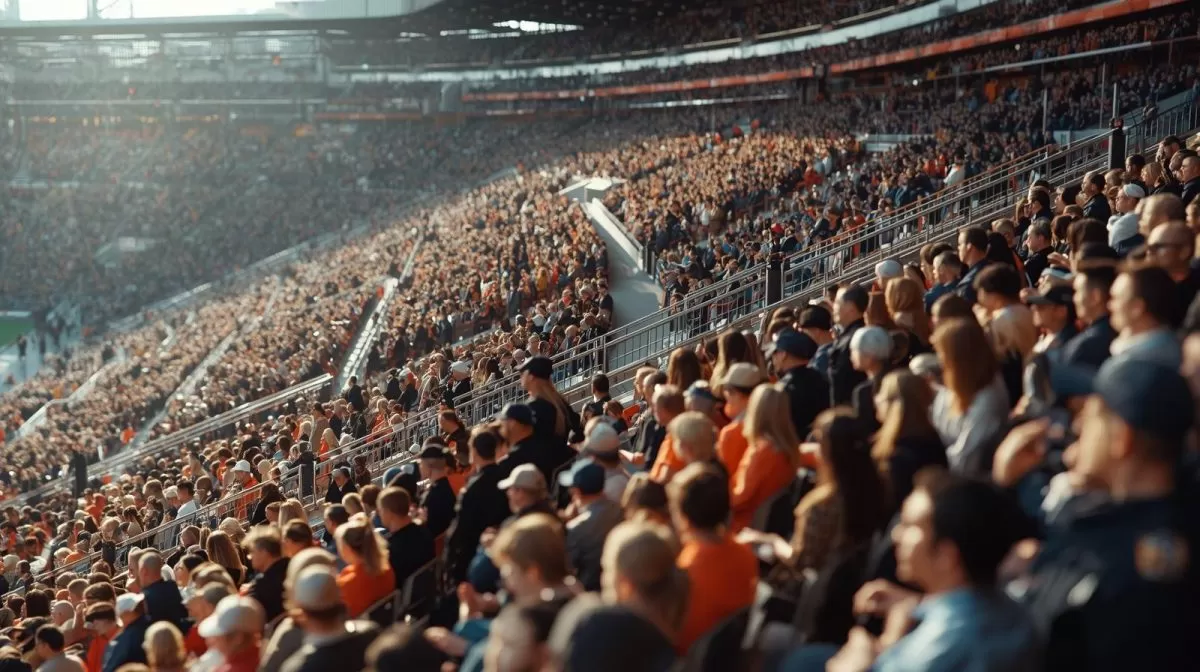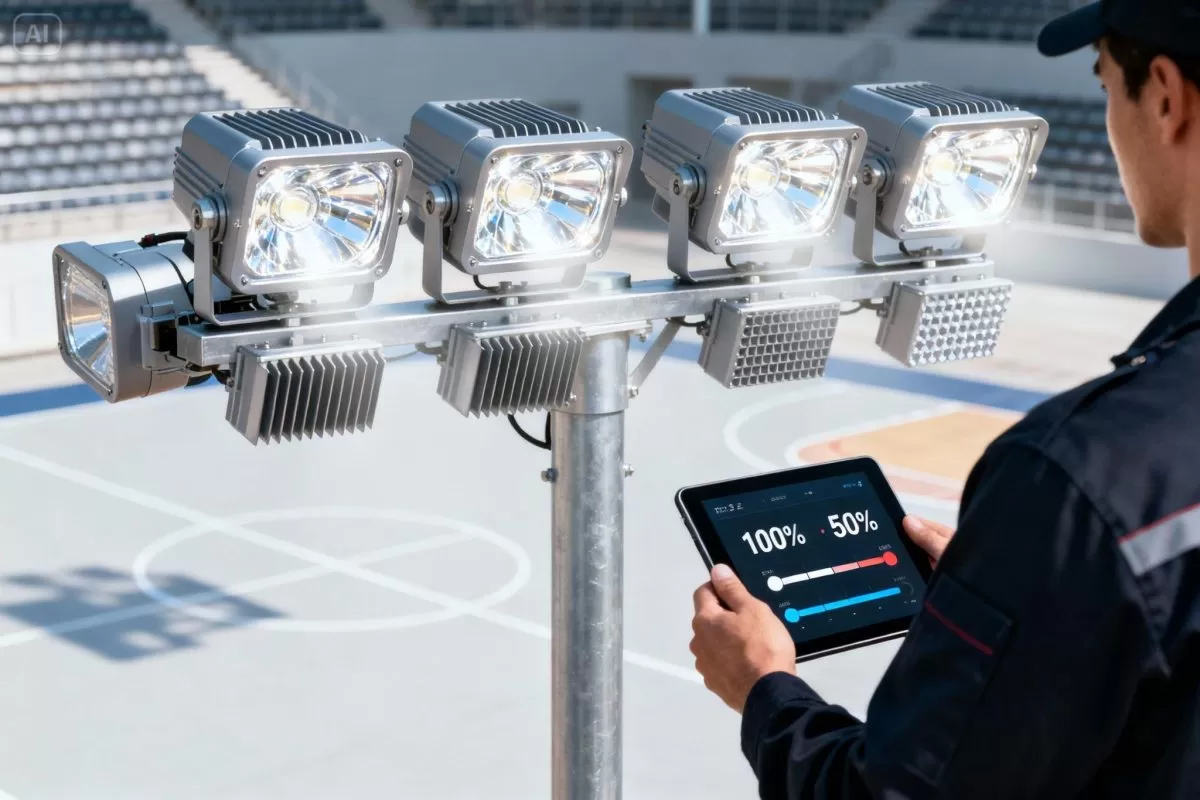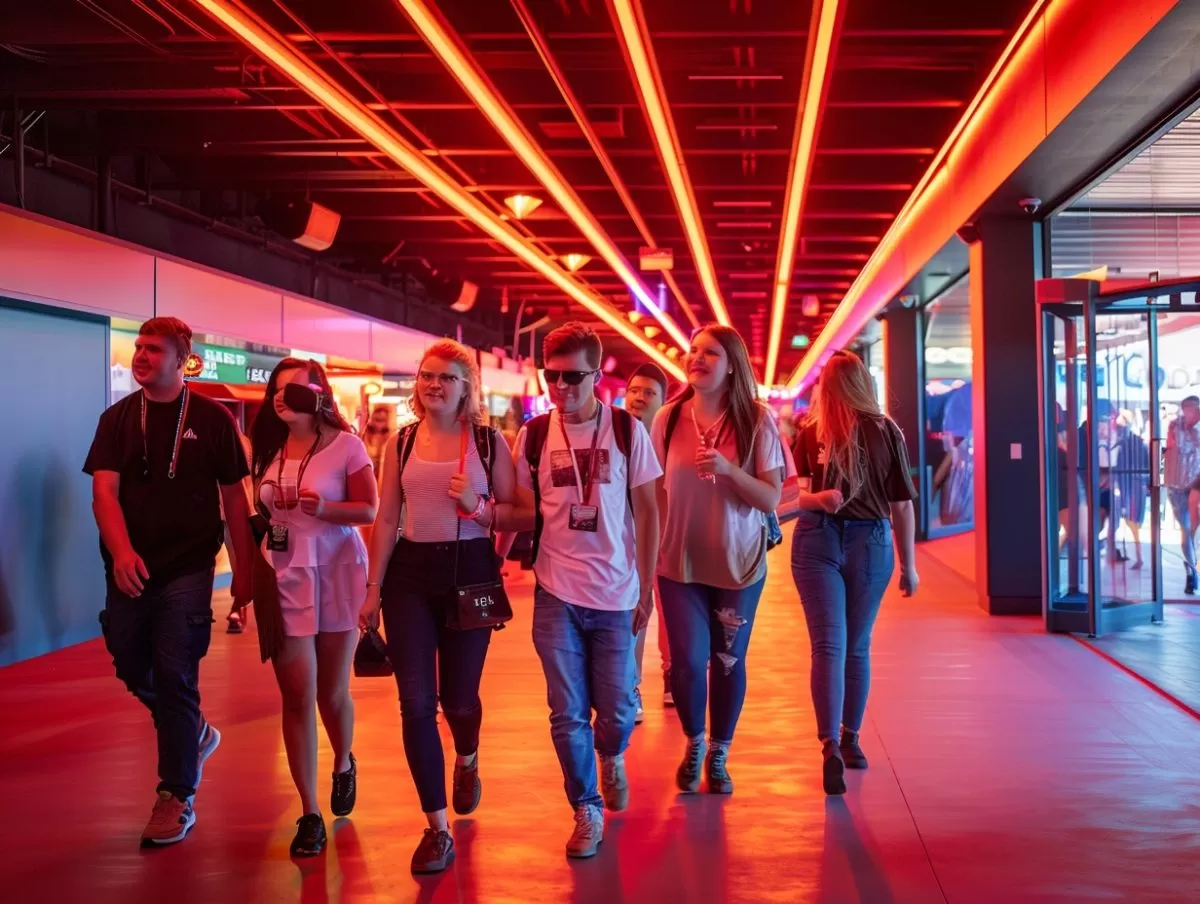
Key Takeaways
- Better lighting makes stadiums safer, more visible and more efficient places to be.
- Modern systems save on energy bills and aid security personnel in better managing groups on a crowd.
- Technology upgrades enhance the security at the stadium, via better monitoring, access control and response times.
- A well lit venue makes for a stronger foundation in ensuring the safety of every person attending the event.
I have walked through more stadium projects than I can remember and every one of them I have walked through I have thought about how different the environment will be once the lights are on. I still remember a cloudy late afternoon inspection many years ago when the field appeared dull before it was sunset.
The moment the new lighting system was alive, the whole venue changed. Colors sprang into new sharplyness, steps were more clearly defined, the very air was easier to move through. You notice these little things when you have been around construction and facility upgrades for any length of time. They stay with you.
Lighting has always been relegated to an underrated part of stadium safety. People often think of cameras, access control systems or the security team first and while these are important, visibility plays a role that is more foundational then most realize.
A well lit space aids security personnel in catching problems sooner, assists safe movements from inside the arena and creates a sense of comfort to the spectator that is difficult to find words for, but can be clearly felt when missing.
Why Stadium Lighting is Important for Safety / Visibility
A stadium contains thousands of people at the average sporting event sometimes more. You have movement in all directions, vendors shouting out orders, and visitors sprinting to make an exit after the final minute.

When lighting is poor, all minor distractions are big risk. You see shadows cast around rows of seats, unbalanced levels of brightness near stairways, or dark areas that make it more difficult to enforce security conditions.
This is where lighting does more than light, it becomes part of the security solution. Better lighting aids in reducing accidents, better monitoring of possible security threat situations, and coordination among security personnel. I have seen venues where even a slight increase in brightness increased the ease of traversing the aisles and allowed the security team to respond more quickly.
The Technical Side Simplified
I don’t like to get too technical in my explanations about lighting systems but there are a few things that help to define how these environments work.
Light levels will have to be balanced throughout the stadium. That means no harsh bright spots and no dim corners that make it difficult for attendees to see where they are going.

Uniformity is important because athletes work on the visual clarity. Fans rely on it too. And let’s be honest, a stadium which looks good on camera does help take a sporting event to a higher level.
Weather resistance is another important factor. Stadiums are exposed to wind, rain, heat, and occasionally storms that put equipment to a test. Modern lighting fixtures have greater survival capabilities in these conditions and continue to perform without sudden flickering or failures.
Large outdoor stadiums should have action plans and procedures for lightning safety, including a designated weather monitor and an evacuation plan. (CDC)
Smart controls provide an additional layer. Automated changes allow staff to up the brightness in key areas, if there is a change in crowd behavior in real-time. I recall testing such a system in a newly renovated venue. One of the staffs looked at the control tablet and said, I did not expect it that easy. What was amusing was that I also felt this was the first time when I used one years back.
Lighting as a Security Asset
Stadium security today is based on good visibility. Every camera, every access control checkpoint, and every facial recognition screening system works better with better lighting to back it. Even with the latest facial recognition technology, without good visibility, accuracy will be lower and the process of identification will slow down, as the crowd becomes dense.

Better lighting helps to curb the risk of security breaches and make the security team more confident. With better sightlines, they are able to pick up unusual movements, track foot traffic and coordinate between sections without the guesswork.
Some venues are using lighting to aid proactive security measures. When the flow of attendees is greater in certain areas, lights automatically brighten and help security personnel refocus. I have seen these changes occur in real-time and there is just something awesome about how smooth those transitioned as almost seamless, even though I know that word can be overused. In this case, it fits.
The Human Experience in the Stadium
In stadiums, when people walk in, the first thing they feel is the atmosphere. Not just the crowd noise, but the spaciousness, the light, the sense of visibility. A brightly lit venue is safer. You want attendees to walk with certainty and not hesitancy.

Bathrooms, concession areas, walkways and seating areas benefit from consistent, uniform lighting that prevents slips and missteps. I have talked to operations teams that told me that accident reports decreased after lighting upgrades. They seemed a little bit surprised at the difference that it made.
Upgrades do not only help the fans. Athletes feel the improvement as well. They have improved control over the size of the field, are able to judge distances more accurately, and have better reaction time. When the lighting is uneven, players notice that, sometimes more than stadium managers expect.
Incorporating Modern Technology in Stadiums
Technology plays an increased role every year. Cameras are integrated with lighting controls, access control systems need the right amount of light to scan tickets or badges, and security personnel need to be able to see in order to track crowd activity.
A modern stadium utilizes lighting as part of its greater security solution. When coupled with cameras and digital monitoring, lighting becomes a backbone for proactive safety planning. Managers are able to spot potential problems earlier, give directions to the security team, and turn lighting zones off without disrupting the sporting event.
I have witnessed these systems lessen response times during a rush toward an exit. With brighter pathways, security staff were able to move faster and guides were able to direct the attendees efficiently. It may not sound dramatic, but when tens of thousands of people are on the move all at once, seconds count.
Embedding sports stadium lighting In The Larger Strategy
During many renovation efforts, the discussion manages to turn to sports stadium lighting. People often conceive of it solely in terms of a performance need to the field but it affects nearly every corner of the place.
Better lighting aids security personnel to monitor crowds, improve accuracy of access control and support overall stadium safety. It links in with broadcast quality, crowd experience and operational efficiency. I still find it surprising how the importance of this is under-estimated by facility managers, until they get to see the difference for themselves).
What’s Successful About These Stadiums
A successful venue prefers visibility in all design decisions. They use lighting to help to support their security measures. They ensure the safety of the attendees by eliminating dark spots and enhancing the sightlines. They integrate their lighting with their technology stack.
They also train their staff to be able to respond to changing conditions. Real-time monitoring can help detect changes in crowd behavior. When attendees head towards exits after a high energy finish makes transitioning by strategic lighting adjustments.
These upgrades do not always need massive re-building. Some venues start with targeted improvements that are done one section at a time. Others complete overhauls with new cutting edge systems developed for both performance and public safety.
The Trends in Stadium Lighting
The future, and it is already changing. Stadiums are using new optics which eliminate glare and direct the light more precisely. Smart sensors record foot traffic. Access control systems go hand-in-hand with lighting to simplify checkpoints. Facial recognition becomes more accurate when there is better illumination.
Many venues are talking to energy saving solutions that are cost-pandemic but provide better visibility options. The end goal is more than just improved lighting but smarter operations in general.
I sometimes think about how stadiums will be in 10 years time. Perhaps even more automation, maybe more integration between a security team and the lighting controls. Hard to say what exactly but the direction looks quite clear, lighting gets smarter, stadium security gets proactive.
Conclusion
Lighting is more than just visibility. It helps to support stadium safety, enhance stadium security, and provide a superior experience to every attendee who enters the space. When a stadium’s lighting is considered as an integral part of their security solution, suddenly the whole thing is safer, clearer and much easier to manage as a result. Whether as through smart controls, better fixtures or design, lighting is one of the most effective ways to boost security and reinforce public safety inside any modern stadium.
If you wish for me to re-write or elaborate on certain parts, I can elaborate on them more.









